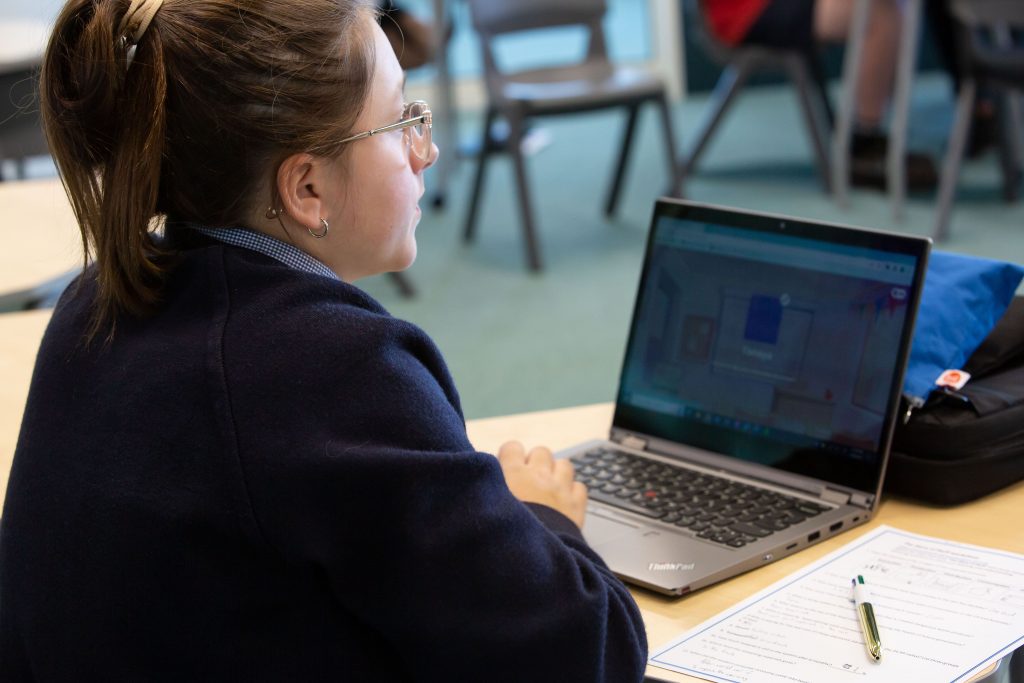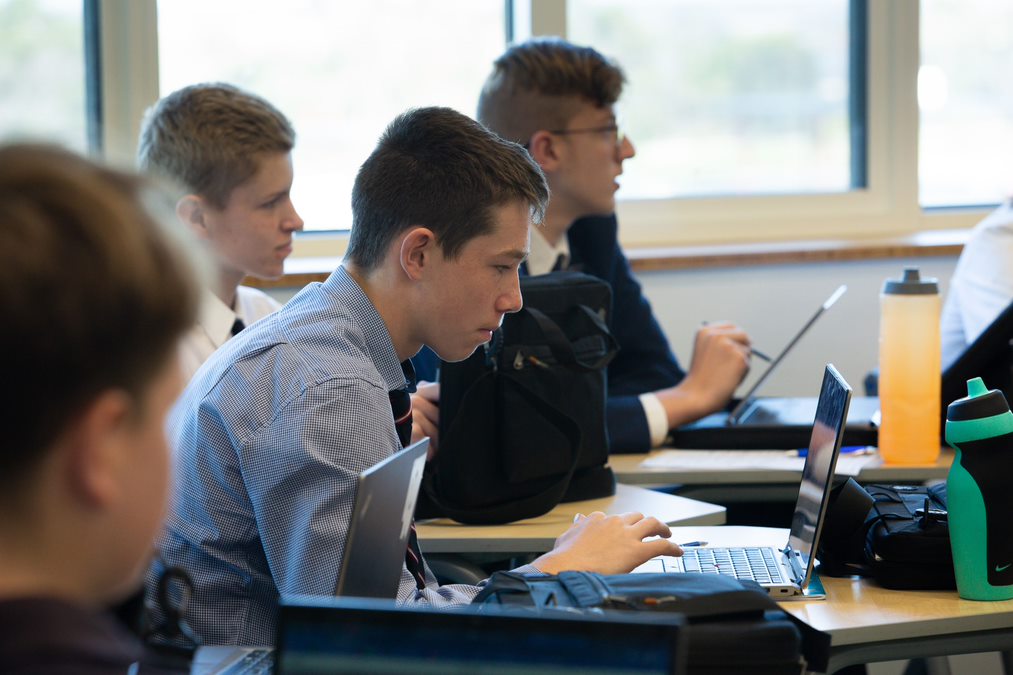Learning in Modern Times: The Benefits of Digital Learning Tools
Wednesday 10th May 2023
Most areas of everyday life are now imbued with technology and different digital tools. Whether it is home life, work or study, people are expected to use technology in their day-to-day functioning, and being unable to adapt can leave people caught short.
At St Francis, we’ve long recognised the value and importance of developing a curriculum that includes digital technologies, helping prepare our students for lives that involve digital tools and ensuring they are adaptable to different situations.
What is digital learning?
Digital learning is any type of education and study that is facilitated by or through the use of technology and makes use of digital technologies to aid in understanding and delivery of a curriculum. Digital learning includes student learning done both online and in a face-to-face, traditional classroom learning environment.
Digital technologies are instituted to bolster student engagement and improve the effectiveness of teaching. They are also included to help familiarise students with digital technology and develop digital skills. Overall, it contributes to our curriculum by giving us more avenues to help students feel comfortable, successful and motivated.
The benefits of digital learning and technology in education
Digital learning is now widely recognised as a positive step in the world of education, providing several significant benefits that improve the student experience. Whilst we recognise the many advantages of digital education, it is important to note that there are both advantages and disadvantages of digital education.
Though there are disadvantages, particularly in trying to accomodate different learning styles and cybersafety, we’ve noticed the following advantages of digital technology in education:
Fun and engaging learning experiences
Integrating technology into quality education enables students to thrive and enjoy different styles of presentation and curriculum delivery. Changing things up can help content and classes remain fresh and keep students engaged for longer periods. Digital technologies in education help deliver instructional materials in new ways beyond the traditions of whiteboard and note paper, helping enhance the overall learning experience.
Full-time access to materials
Digital technologies ensure students are able to reach the resources they need for learning at all times. Many schools nowadays have an online learning systems where teachers can load resources and communicate with students. This helps to ensure students are able to check all the information they need for assignments or classroom tasks whenever they want a reminder, instead of potentially forgetting after the teacher has explained things.
A digital education system also helps students who may have to miss some time in the classroom due to illness or other personal circumstances. Having explainers, recordings or answer keys available online can reduce the stress students feel when they have to miss classes, and makes keeping up to date much easier.
Increased collaboration and communication
Digital learning isn’t all about improving communication between students and teachers either — it also has significant benefits for collaboration between students. Using video conferencing or document sharing tools can keep students in contact with one another within and beyond the classroom.
Encouraging collaboration helps students to develop teamwork and important social skills, which prepares them well for life beyond school. Sharing the load of work and learning how to accommodate one another’s ideas teaches our students respect and the value of good communication.
Facilitates new learning strategies
Engaging our students with digital technologies helps them to acquire new methods of studying and encourages them to build their capabilities in self-directed learning. With more access and flexibility, students can better tailor their studying and find methods that suit them, improving student performance and mental wellbeing.
How we deploy technology as part of digital learning
It’s worth mentioning that digital learning does not immediately improve learning outcomes for students, but work must still be put in to creating an appropriate and well-rounded curriculum that is delivered with the use of digital tools. The importance of digital tools in education cannot be overstated in keeping students engaged and not distracted. We are committed to providing a thoughtful integration of digital educational resources to imp
Personal devices
As part of our curriculum from Years 7 to 12, each of our students is provided an individual laptop that they can use in classes and for personal study. This ensures that each student is able to access the resources and class notes that their teachers make available online, and use them whenever they need them.
Content from earlier learning areas can also be accessed more readily, allowing students to work at their pace during revision and taking some pressure off of teachers. Having an individual device gives students ownership over their own learning, which teaches diligence and helps them identify effective revision techniques.
Cybersafety and responsible use of digital technologies
Whilst we recognise the many benefits of digital technology in education, we also acknowledge the concerns around Cybsafety. We recognise that digital technologies can be used in more ways than just education and have worked to create a standard that is centred around student learning and development, and educates students about how to stay safe online. We proactively have procedures in place and use a filtered internet service, and reactively respond to any issues when they arise as efficiently as possible.
The use of digital technology in education helps students stay educated about privacy, copyright and intellectual property, ensuring they are use digital resources in a fair and equitable way, and in ways that promote personal development and knowledge growth. We also work to ensure a balanced approach and avoid students having excessive screen time with their devices.
Digital learning program
St Francis Xavier College has designed its classrooms to support the Digital Learning Program (DLP) with flexible learning spaces. These spaces enhance and transform student learning by creating collaborative learning areas where students can develop their creativity. They have spaces for working standing up, small and large group work, independent and pair work, floor work, brainstorming, discussions and the use of technologies like wireless projection and multiple screens.
The benefits of these flexible learning spaces include increased student engagement, improved focus for students who have difficulty focusing, and the ability for students to make choices about their own learning. Flexible learning environments are becoming increasingly popular as schools merge their remote learnings with in-class activities.
Staying connected
At St Francis, our focus is always on student wellbeing and developing their abilities. We use digital learning as an aspect of our curriculum to aid with this, in combination with our wellbeing curriculum, robust extra curricula programs, and overall positive school culture.
Above all, everything we do and all decisions we make are built around providing a pathway for every child.

